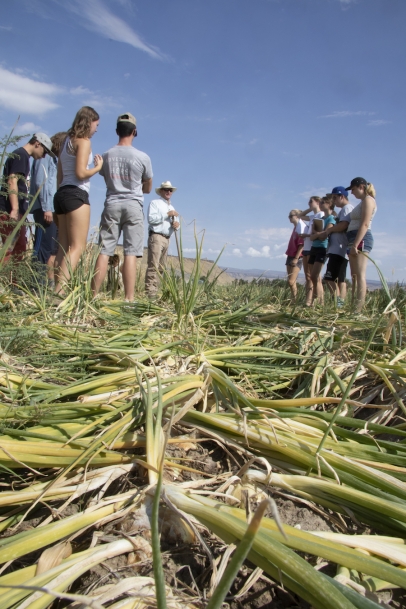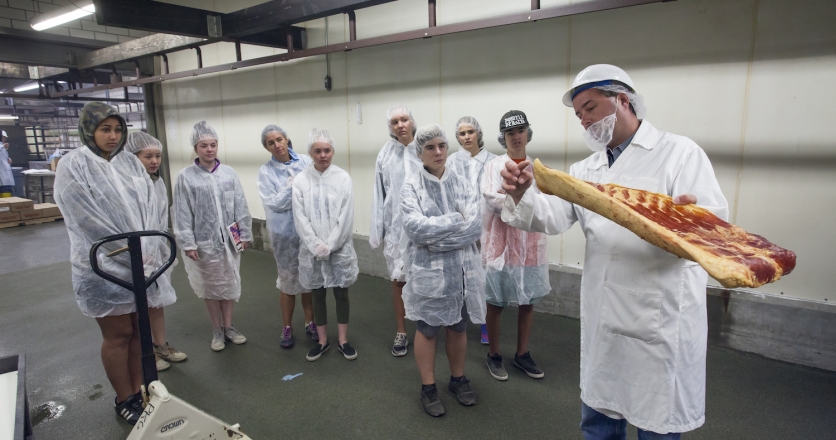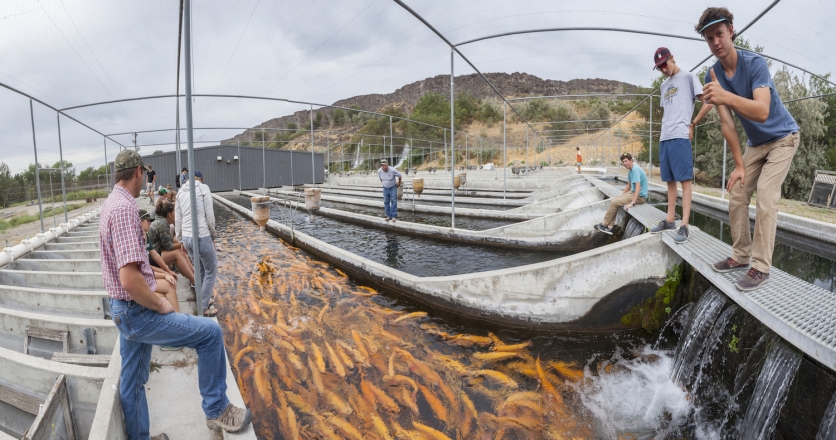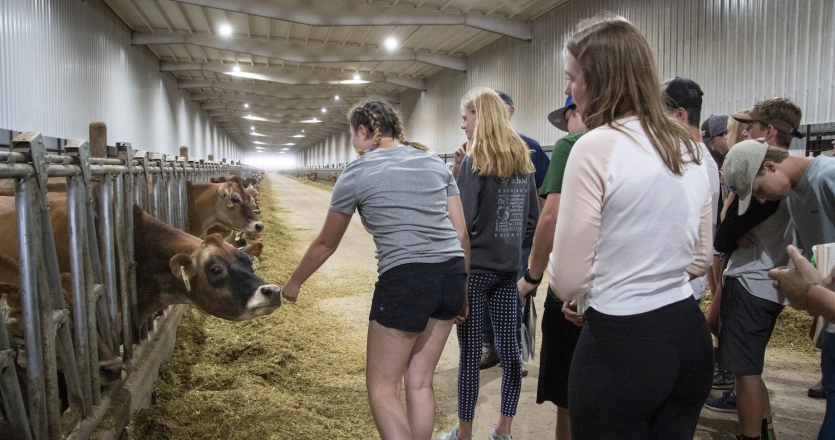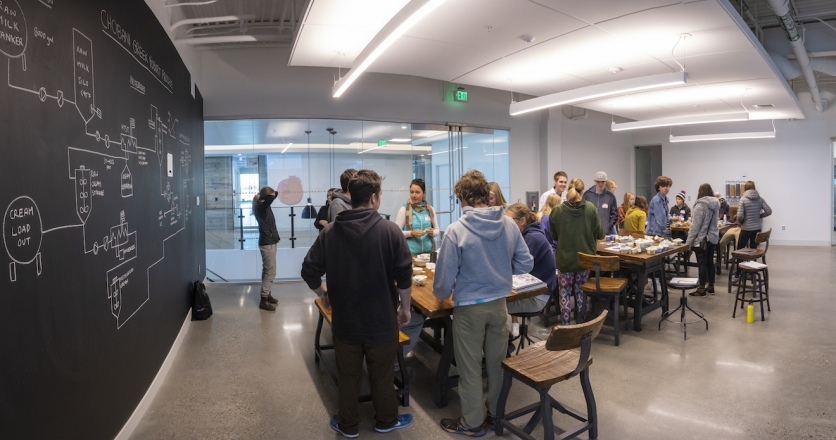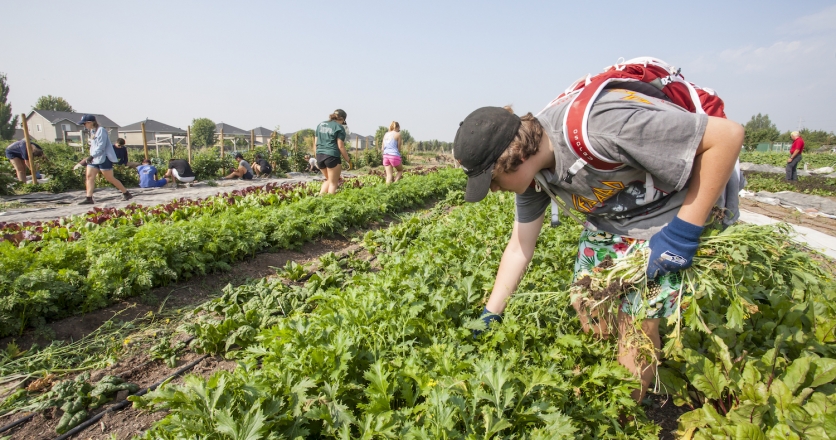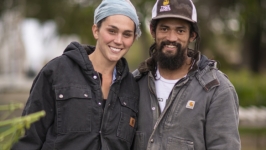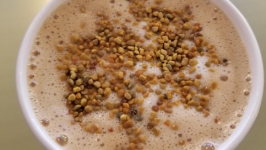Going to the Source
Farming is a way of life for much of Idaho; according to the USDA’s National Agricultural Statistics Service, the state has nearly 25,000 farms and ranches spread over 11.6 million acres producing livestock, dairy products and a number of other commodities like potatoes, wheat and sugar beets. But in the Wood River Valley, the importance of food and agriculture to the state and to larger systems overall might not be apparent, especially to a 16-year-old.
That’s where the Sage School’s year-long Food and Agriculture Program comes in. The Sage School in Hailey is home to around 70- plus students who learn through the school’s unique curriculum that centers on Human Ecology and engaging experiences designed specifically to promote self-awareness, community responsibility and a sense of place. The 10-11 Human Ecology course (the study of the relationship between humans and their natural, social and built environments) is taught by a team of three teachers—Emma Drucker, Matt Leidecker and Amy Morrison—who are guiding this year’s combined group of 10th and 11th graders through the Food and Agriculture Program. Students take the Food and Agriculture Human Ecology course daily, along with math, Spanish and writing classes at the school.
“For each age of adolescents, we choose a broad theme that’s relevant to their development and that addresses a lot of different academic disciplines like history, geography and science, and you can see how food and agriculture encompasses so many of those,” Drucker said.
“The goal is for students to see a connected system versus segmented things.” This focus on systems-thinking helps students see links between ideas that are generally taught as disparate, disconnected subjects.
The year begins with a field study: two weeks on the road visiting a variety of farms and agricultural facilities around Idaho. This year’s students visited Simplot Land and Livestock in Grand View, King’s Crown Organic in Glenn’s Ferry, Bettencourt Dairy in Wendell, Cloverleaf Creamery in Buhl, Lamb Weston Potato processing plant in Twin Falls, Fall’s Brand Independent Meat Company in Twin Falls, the Baker family ranch up the East Fork of the Salmon River, Grasmick Produce Distribution Center in Idaho Falls, and Chobani and Glanbia in Twin Falls.
“I had never looked into where my food was coming from,” said Marcella, an 11th grader and one of the 20 students participating in this year’s curriculum shortly after the field portion of the program.
“I’ve always just bought food where my parents bought it and eaten it and never thought about the process behind it.” Tenth grader Willa added, “I think I was reassured by what we learned. Although everyone we saw and every place we visited was different, everyone we met was super passionate about what they were doing and believed they were doing the right thing.”
Some of the issues brought up in the field study and throughout the year—such as visiting a slaughterhouse or learning about poor working conditions for migrant farm workers or the ecosystem impact of agricultural waste—can seem tough for students to learn, but the Human Ecology teachers stand by teaching this program for this age group.
“Food and agriculture is relevant to their age,” Drucker said.
“Many 16-year-olds are starting to have pocket money to decide what food they buy, what they want to eat and why. There are so many factorsthat go into our decisions about what to eat and we think it’s the right age for students to be looking into it.”
Many of this year’s seniors who experienced the program as 10th and 11th graders agree that it was the right time to learn and the year overall had a great impact on their understanding of the food system.
Twelfth grader Molly took a perspective during her Food and Agriculture year that focused on the labor and people behind food production and the treatment of those people.
“I took a more social view on food and also looking at how accessible food is,” Molly said. “I’m happy with what I learned but honestly, it was disappointing to see the way our world is working and how in our own community there are so many people that are hungry, which wasn’t something I was aware of before this unit.”
After the field study, major components of the Food and Agricultural Program change with each season. After the field visits, the fall is dedicated to making podcasts on an aspect of Idaho agriculture, which will be shared with the community. During the winter, the students will do a project modeled after Johns Hopkins Center for Public Health called the Food Citizen Action Project. Students will hear from a panel of food experts like producers, people who run grocery stores and people who work for nonprofits like the Hunger Coalition.
“They hear different perspectives from people with a stake in our local food community then propose a solution that they think could make our food system more resilient,” Drucker said.
The spring focuses on metabolism, nutrition and food’s role in culture, ending with a farm-to-table feast featuring a menu created by the students themselves, food they will source and then ultimately cook with the help of local chefs who volunteer their time. The meal is served to 150 people in the community and is also a fundraiser for an organization of the students’ choosing.
“It essentially is the culmination,” Drucker said. “After spending a year talking about food, what would the ideal meal look like? How does the food we serve impact our community, our personal health and the health of the planet? Then we sit down for the fun part: eating good food!”
Sage School | @thesageschoolidaho
Simplot Land and Livestock
King’s Crown Organic
Bettencourt Dairy
Cloverleaf Creamery | @cloverleaf_creamery
Lamb Weston Potato
Fall’s Brand Independent Meat Company
Grasmick Produce Distribution Center
Hunger Coalition


